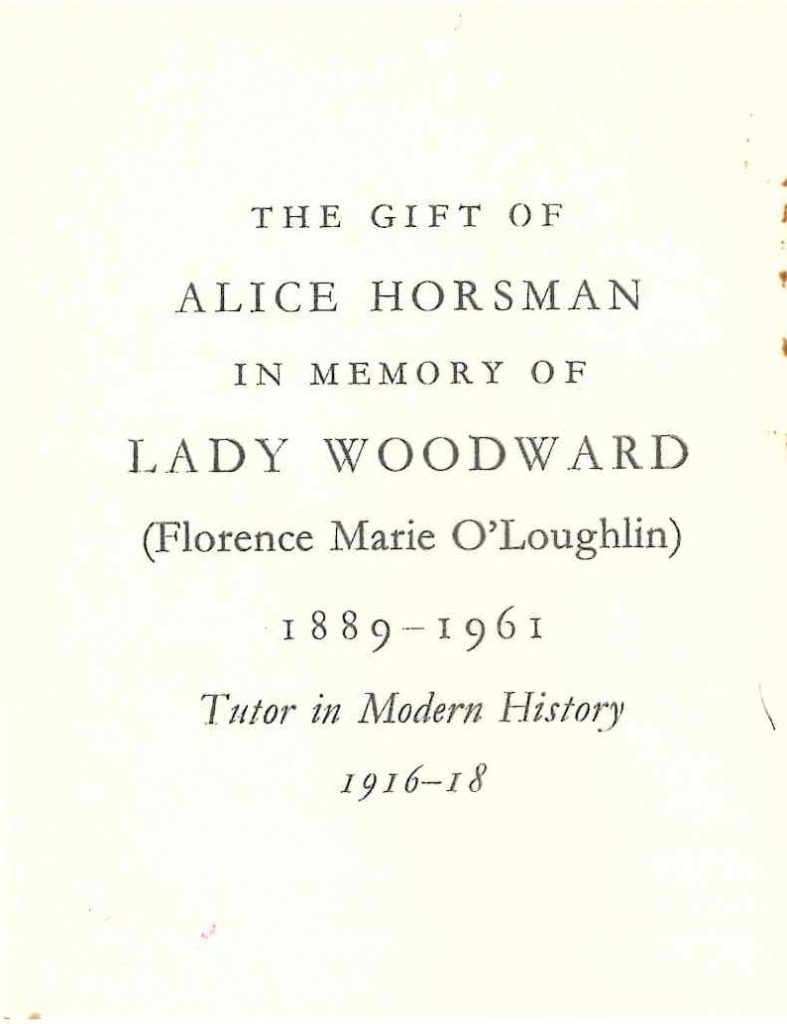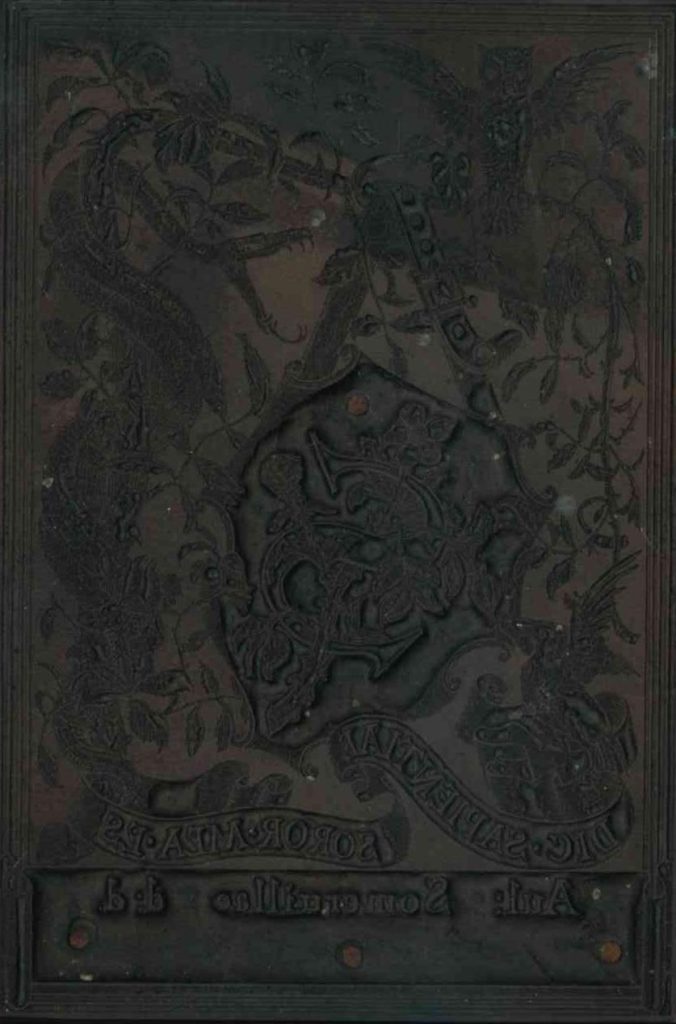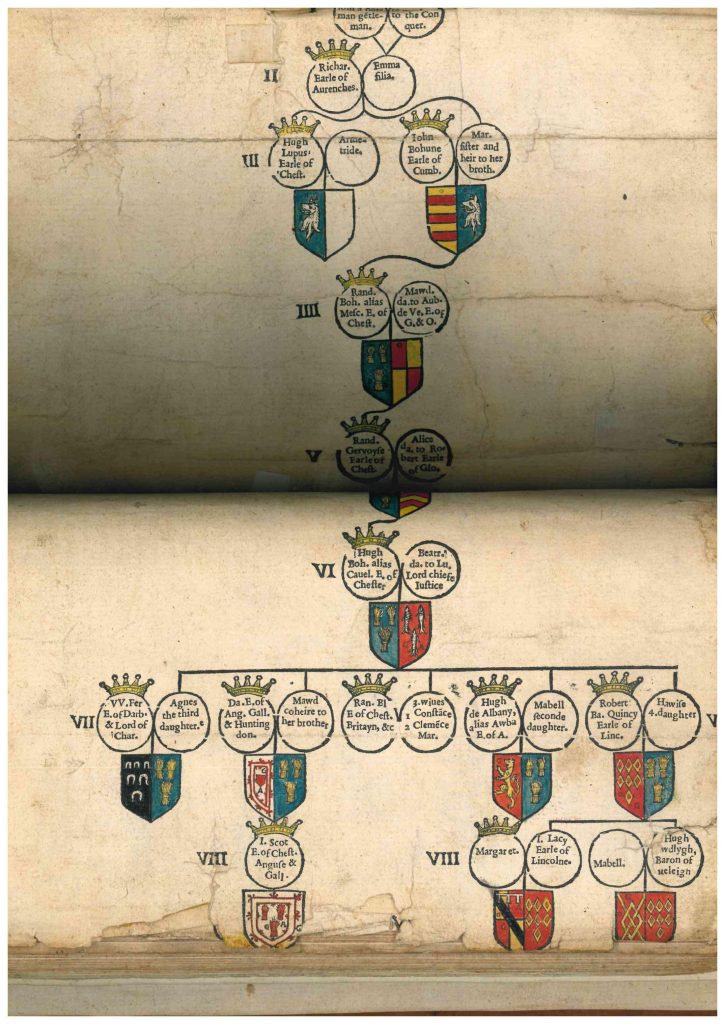Past exhibition
Loggia Exhibition 2nd March 2023
World Book Day (UK) 2023
World Book Day sees school children across the UK dress up as their favourite character from a book: this is perhaps a bit impractical for all of the library staff (and dressing as an orangutan might *slightly* impinge on Matthew’s ability to shelve books…), but it has made us think about what is in all of our Library books, which is (of course) the College Library bookplate (image 1)
This design has been in use since the early 20th century – this one has a peel off back and is pregummed, but old ones would have required gluing, or even wetting and affixing in place. When we receive gifts and named bequests this is noted in the book, on our accessions list and in the College Report, and we often print out the bookplates – the one below, for the bequest of Margaret Mann Phillips (Modern Languages, 1924) would have required gluing in place (image 2)
Some gifts would have been for specific purposes, and we have several such special fund lables, like the one below a gift label from Alice Horsman in memory of Lady Woodward (image 3)



The current design superseded an originally much more simple one, the block from which bookplates would have been printed, in its envelope bearing an example of the finished look is shown below (image 4)
In addition to gifts and bequests, the college also had several other styles, including this rather fetching college prize bookplate, complete with laurel wreath (image 5)


These bookplates date from the period in which Somerville has been known as “Somerville College”, but we have many examples of books predating 1894, which have the much more elaborate Somerville Hall bookplate: this bookplate was a gift from Mrs Yorke Powell, designed by Miss Howard and engraved by Mr G.C. Harrison, and below the image of the bookplate is the block from which bookplates would have been printed (sadly, it is quite difficult to take a picture in which all the detail is clearly visible!) (images 6 and 7)


Our new bookplate uses the coat of arms of the Somerville family, but is a different colour from the original: Mary Somerville’s family used blue and gold, whereas we use now use silver, red and black.
We also have examples of non-Somerville bookplates in our collection, such as that of major early benefactor Amelia B. Edwards (image 8). This is of a an older and more traditional type showing her family’s coat of arms and motto and, as it happens, the 2nd March is the anniversary of the incorporation of the Royal College of Arms, who both design and ratify coats of arms in the UK and, while Somerville does not boast a wealth of books with historic coats of arms, we do have several interesting examples.
On display in the loggia are a few examples such as this book about the heraldry of the Lacy family, written by John Ferne, published in 1586 and entitled The blazon of gentrie. The book is open at the Lacy family genealogy, which contains small depictions of each of their own coats of arms (image 9).


We also have a copy of Quintilian bearing the arms of Louis XIII (complete with traditional French royal symbol the fleur de lys), who may well have been an owner of this copy at some point in time: the book was printed in 1527, but has been rebound and passed through several hands, before being given to the library by the Somerville Association (ASM) at Christmas 1960 (image 10)
Another handsomely bound volume is Edward Herbert’s Life and reign of Henry VIII (1649), given to the library by Miss Ethelreda Carless (Maths, 1893) and bearing on its cover the arms of the Killigrew Family (image 11)
While the Louis XIII book bears different inscriptions of the various owners, several of our books have the various owners’ own bookplates too, all in one volume, as with the copy of the 1560 work Cooper’s Chronicles (image 12), which clearly shows the plates of Harvard College Library, of Edward Burton and of W.P. Turnbull – there is even one in the rear, belonging to Richard Ashhurst Bowie.


